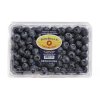I think also:
1. Faulty T cells being the problem
2. Faulty NK cells being the problem
3. Some other cell that expresses CD38 being the problem.
I don't think they say anything about exact levels of protective antibodies, just that they're still at protective levels at 12 months, so maybe, say, ~25% of the protective antibodies were killed as well as ~25% of the LLPCs that cause disease, and a 25% decrease was enough to see substantial improvement.
Also, as I
brought up before, I wonder if the NK cell correlation being in the blood might suggest that the problem cells that need to be killed are easily accessible from the blood compartment (i.e. not LLPCs in the bone marrow). If the vaccine antibody secreting cells are mostly in the bone marrow, but the dara dose wasn't high enough to really kill them, but it was high enough to kill the problem cells somewhere else, that might explain it.
I don't know a lot about the types of LLPCs, but I think maybe the spleen, lymph nodes and other secondary lymphoid organs sometimes house more "innate-like" plasma cells like the marginal zone B cells in the spleen, and maybe that's what the dara needs to kill.

